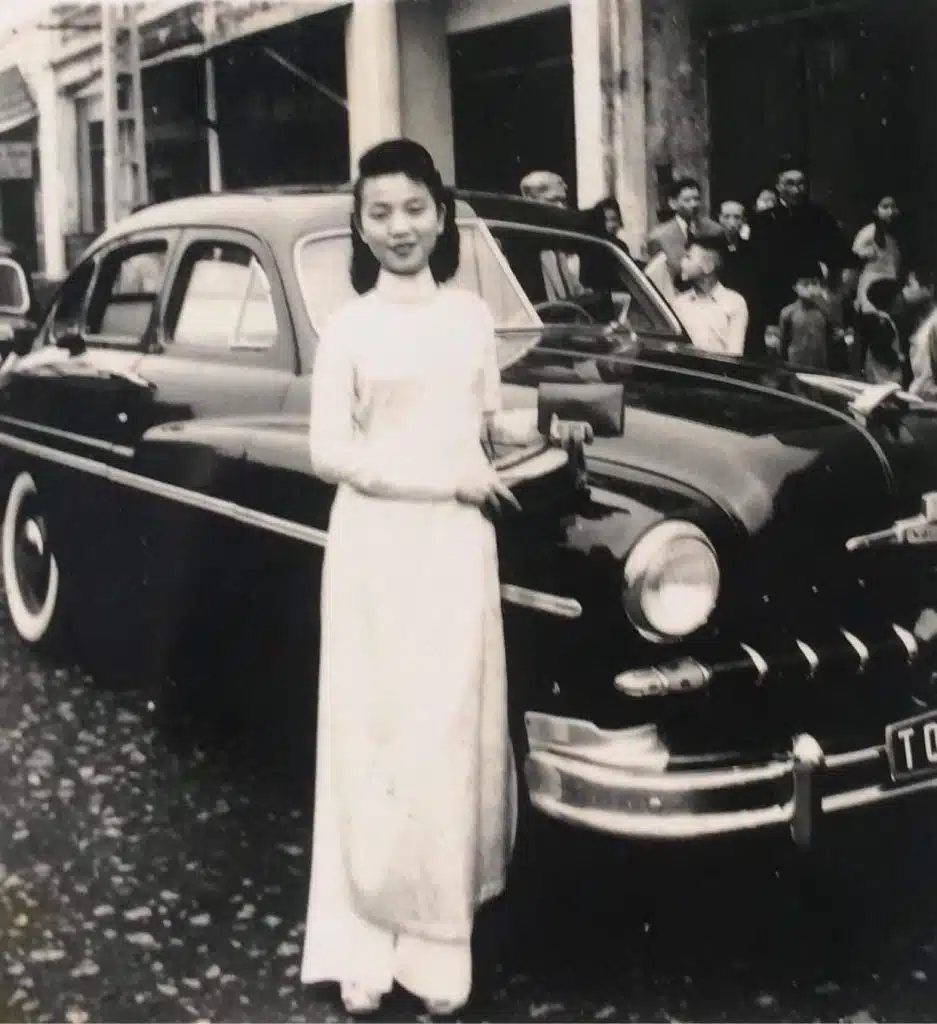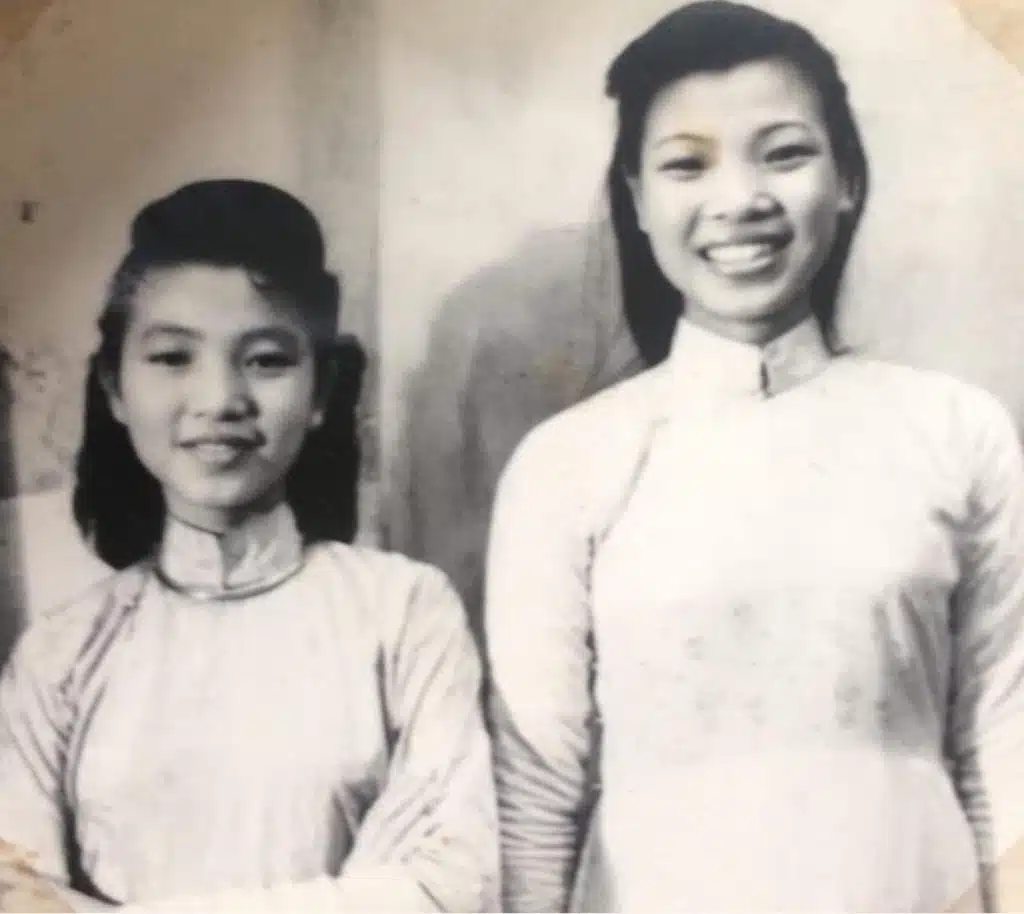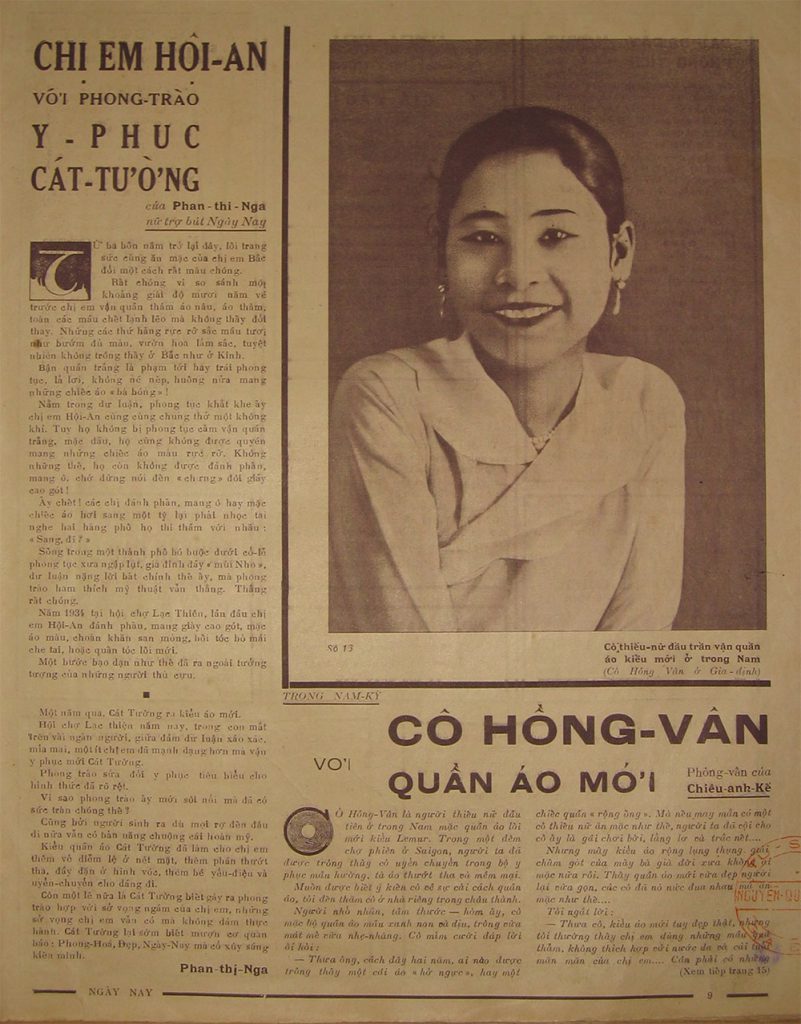Story THUY TIEN
Photos NGOC THANH, INTERNET
Hanoi during the Indochina period was a pioneer in modern aesthetic trends that transformed the fashion scene across Vietnam.

Bustling city streets
Through a long historical process, from the birth of Thang Long more than a millennium ago to its emergence as capital of the Indochina Federation in 1902, Hanoi has been a hub for wide-ranging cultural and fashion influences. Lively streets, filled with buyers and sellers fueled the development of urban fashion, creating a vibrant market where the latest clothing trends spread rapidly.
The fashion center of Hang Dao Street (Rue de la Soie) in 1940 comes to life through the archival photos of American photographer Harrison Forman. It’s easy to spot a series of renowned shops: Thanh Luong Tailor at 39 Hang Dao, Trinh Van Suu’s shop at 45 Hang Dao specializing in scarves and hats, To Chau Dye Factory at the intersection of Hang Dao and Cau Go, and even the international shoe brand Bata. Additionally, streets specializing in clothing like Hang Trong, Hang Gai and the shoe street Hang Giay played a crucial role in shaping Hanoi’s fashion landscape at the time.
The wave of western clothing
In the 1930s, young intellectuals raced to “abandon the old for the new” by donning Western attire. Advertisements from 1929 by “Gilet and pullover for adults and children,” “hat brim ribbons,” “tirat and mossant-style feutre hats” and “MURAT brand cufflinks and buttons.” However, the emergence of Western clothing did not mean that the Vietnamese passively accepted French fashion.

In early January 1934, a short advertisement by the Cu-Chung weaving company appeared in the Phong Hoa newspaper. “Our textile company is the first in Indochina to introduce the art of weaving pullovers with intricated Jacquard designs,” the ad copy read. “We have recently imported many machines from Germany to weave pullovers, scarves, and Tressé-style cross-knitted ties, which are exceptionally beautiful and unmatched in quality.”
This advertisement clearly shows that the Vietnamese not only imported fashion but also actively absorbed and mastered Western textile techniques. For example, in the 1930s, the village of Cuu in Hanoi sent teams to France to learn Western tailoring, and upon their return, they taught the craft to their fellow villagers. The people of Cuu then spread their renowned tailoring skills from Hanoi to Saigon. A notable example is the Phu Cuong Tailor at 10 Hang Trong, which, despite having passed through four generations, still retains its original name and traditions.
The “modern girl”
While urban men wore suits, vests and ties, women were not far behind in pursuing modern trends. The term “modern girl” was mentioned in the Phu Nu Thoi Dam newspaper on October 29, 1933, describing the image of a young woman of the era: “They dress and adorn themselves in new styles. White pants, colorful blouses, high heels, white teeth, a side part, and they converse with men in French, occasionally writing articles for newspapers, and their calling cards bear the title of ‘female scholar’…” This was not just about clothing but also a revolution in demeanor and thought. Exposed to Western ideas, urban women gradually sought to assert themselves, sparking the first debates on gender equality.

As progress continued, traditional blackened teeth became increasingly rare on the streets of Hanoi. By the 1940s, women in Hanoi still maintained the habit of tying their hair but gradually abandoned the traditional quai thao and ba tam hats. Their graceful hair was allowed to flow freely in the city, from voluminous, curly phi de styles to long, loose hair with clips, and even the trendy shoulder-length bob. Notably, they parted their hair to the side, rebelling against the center part that represented the modest, proper look of the previous century.
Even Hanoi’s classic black pants became outdated. Phong Hoa newspaper once outlined the desires of modern women: “We prefer soft, cool white silk pants over thick, cumbersome cotton ones.” This concern was echoed in the short story Co Keu, The Modern Girl by Nguyen Cong Hoan in 1933. In it, the character Bach Nhan, who had yet to wear “white pants and a six-button blouse,” shared her very “practical” thoughts: “Miss Bach Nhan was very sad because she was too old-fashioned. Even so, she was still known as a girl from Hang Dao!”
During this era, Lemur Cat Tuong – a graduate of the Indochina College of Fine Arts – felt the need to Westernize clothing while preserving national identity. He transformed the traditional five-panel ao dai into a two-panel design, refining the silhouette to hug the body and highlight feminine grace, while encouraging the pairing with white pants to demonstrate the civility of the Annamese people. When his designs were published in the 1934 Lunar New Year issue of Phong Hoa, they quickly gained fame and were later recreated by renowned artists Le Pho, Mai Trung Thu, Le Thi Luu and Vu Cao Dam, becoming symbols of the modern Vietnamese ao dai.
In this way, Hanoi went through a tumultuous period with fashion trends continuously clashing and blending. It was these bold experiments and initial opposing reactions that helped shape the aesthetic identity of a society gradually transforming itself.










